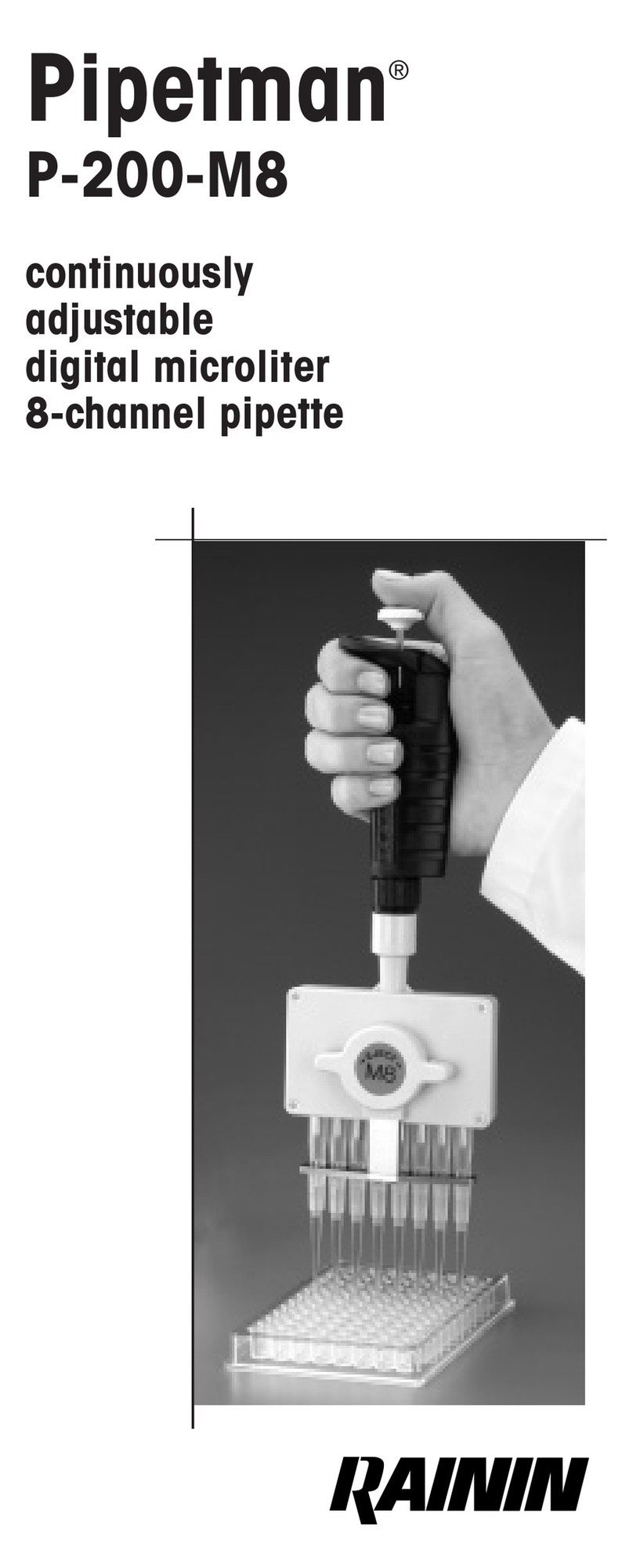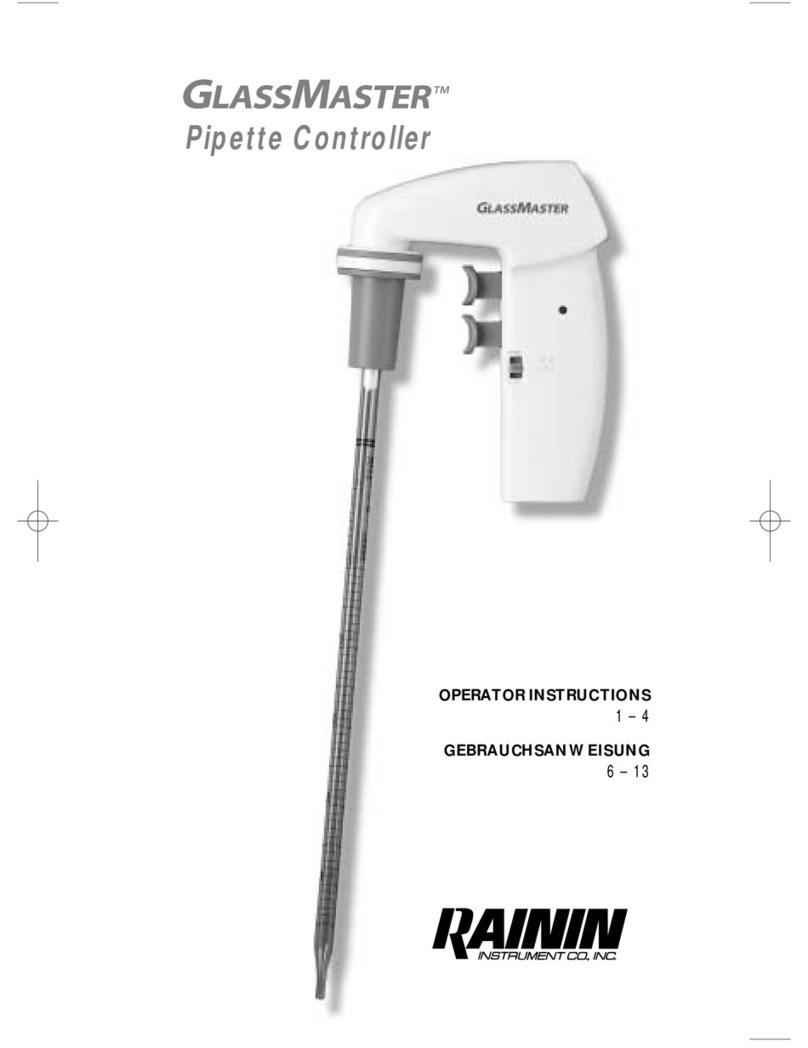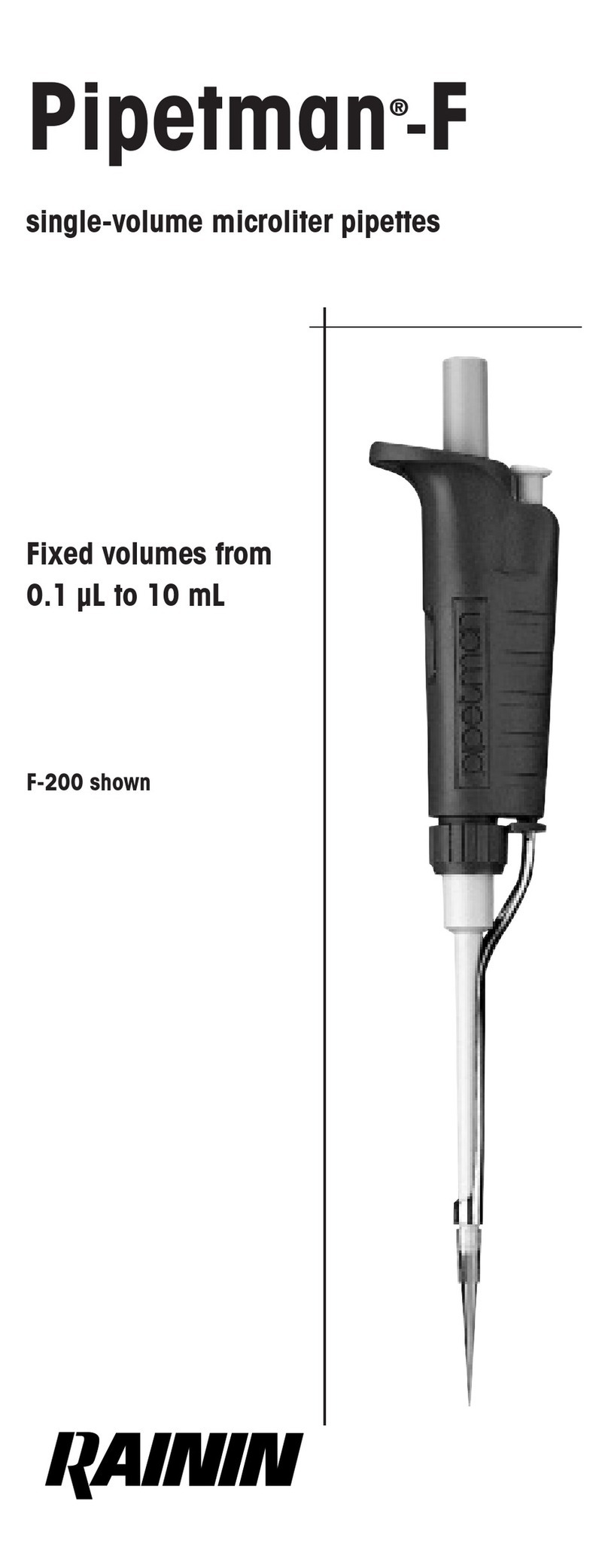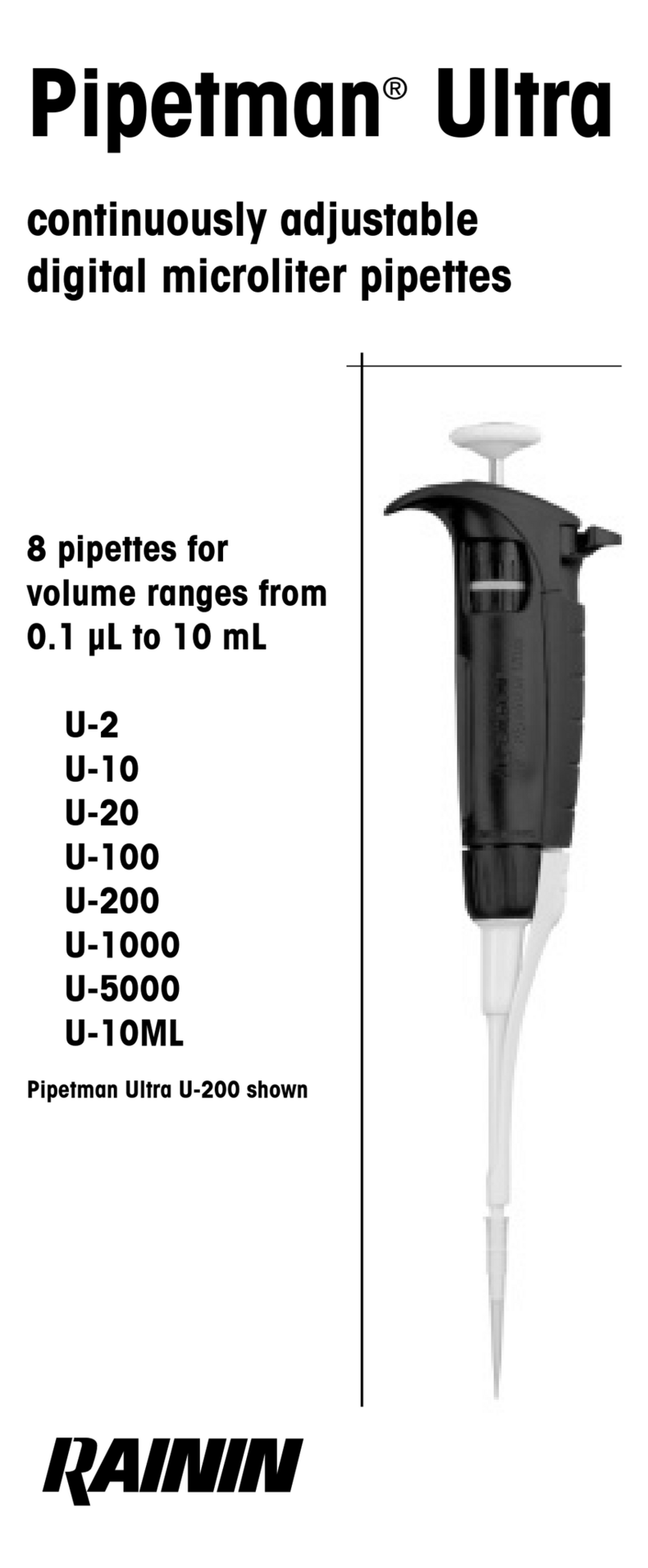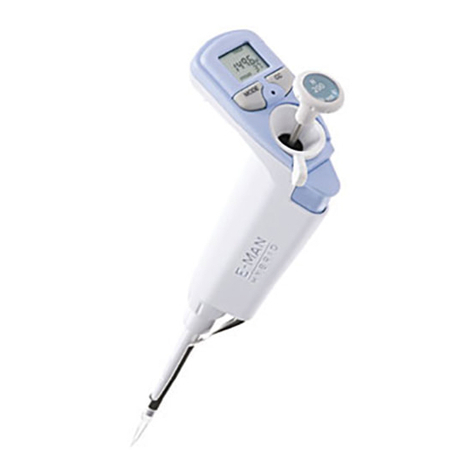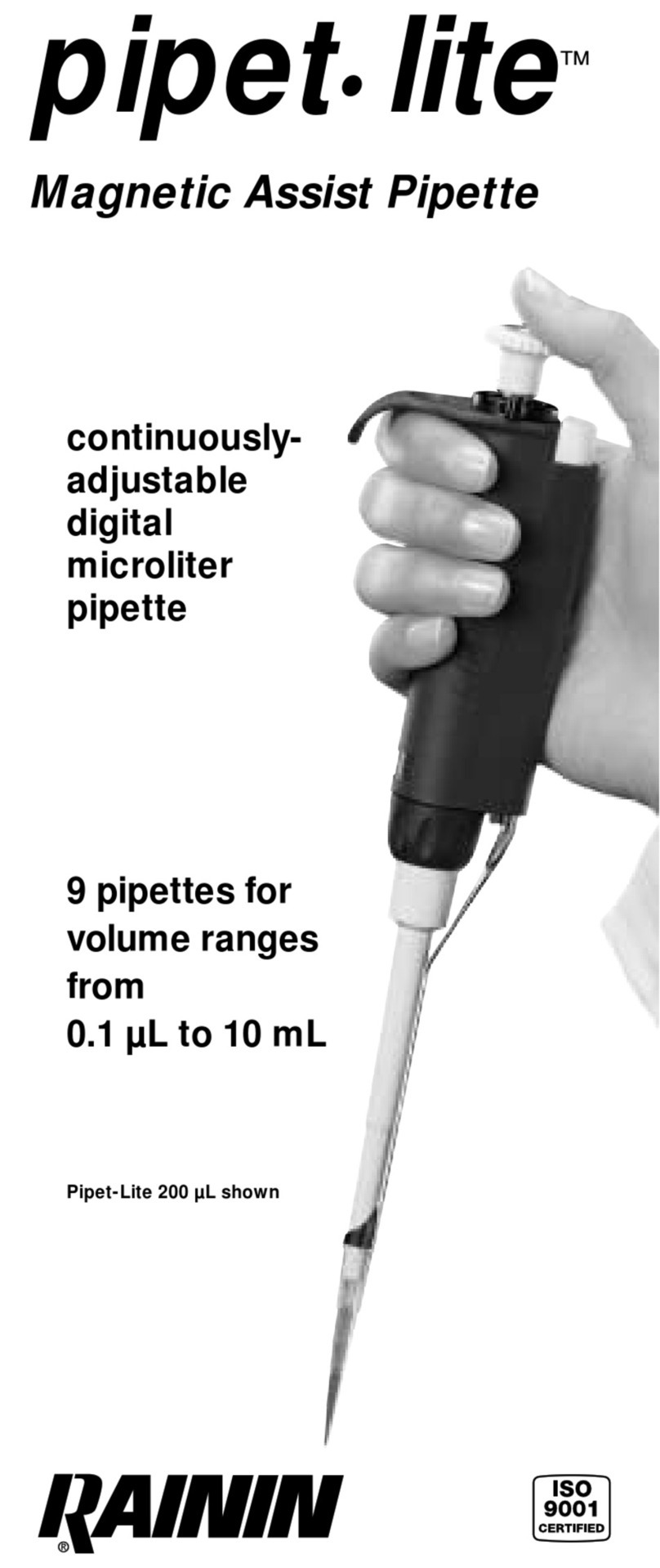Operation
There are two ways of setting volume on Pipetman
pipettes: with the volume adjustment knob, or by turning
the plunger button. Both give exactly the same results.
Volume Setting using Plunger Button
1a. Hold Pipetman in one hand. With thumb and forefin-
ger, turn the plunger button counterclockwise until the
volume indicator is 1⁄3revolution above the desired
setting, then turn slowly clockwise until the desired
volume shows on the indicator.
Volume Setting using Volume Adjustment Knob
1b. Hold Pipetman in one hand. With the other hand, turn
the volume adjustment knob counterclockwise so the
volume indicator is 1⁄3revolution above the desired
setting, then turn slowly clockwise until the indicator
shows the desired volume.
2. ALWAYS dial down to the desired volume. This pre-
vents mechanical backlash from affecting accuracy. If
you pass the desired setting, turn the dial 1⁄3revolution
higher than desired and reset the volume. The friction
ring prevents unintentional volume changes.
3. Attach a new disposable tip to the pipette shaft. Press
only enough to make a positive airtight seal.
4. Press the plunger to the FIRST STOP. This part of the
stroke is the volume displayed on the indicator.
5. Holding Pipetman vertically, immerse the tip into the
sample to the proper depth; see page 5.
6. Allow the pushbutton to return slowly to the UP posi-
tion. Never let it snap up!
7. Pause briefly to ensure that the full volume of sample
is drawn into the tip.
8. Withdraw the tip from the sample liquid. If any liquid
remains on the outside of the tip, wipe it carefully with
a lint-free tissue, avoiding the tip orifice.
9. To dispense sample, touch the tip end against the
side wall of the receiving vessel and depress the
plunger slowly to the first stop.
Wait: 1 second* (P-2, P-10, P-20, P-100, P-200)
1-2 seconds* (P-1000)
2-3 seconds* (P-5000, P-10ML)
* Longer for viscous solutions.
Then press the plunger to the SECOND STOP (bottom of
stroke), expelling any residual liquid in the tip.
10. With the plunger fully pressed, withdraw Pipetman
from the vessel carefully, tip against the vessel wall.
3
pipetman rev I 9/13/00 3:12 PM Page 5






